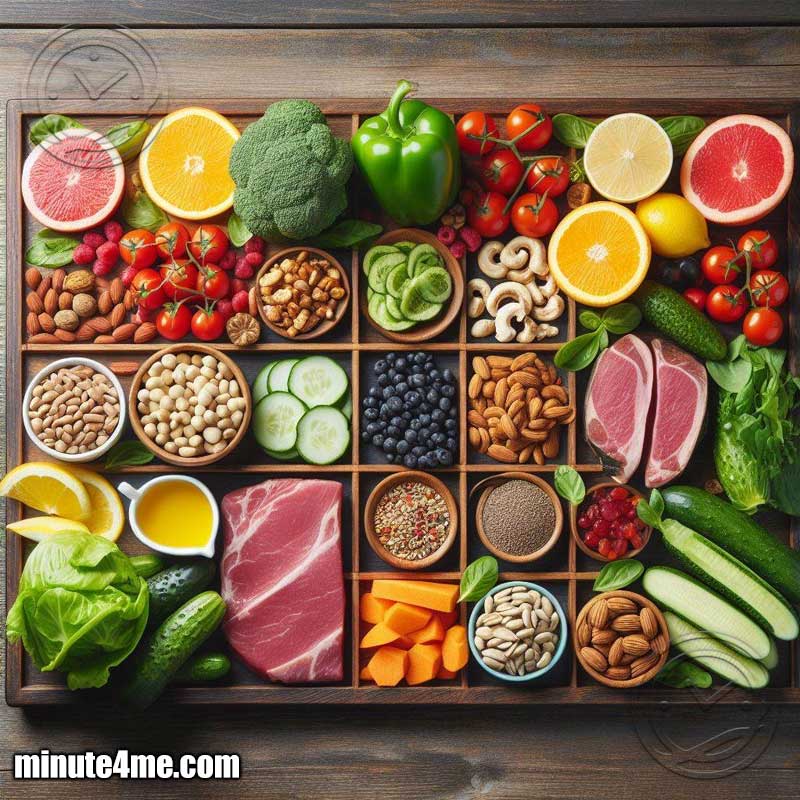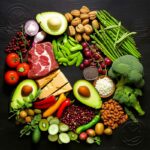Introduction to Zone Diet
The Zone Diet, developed by Dr. Barry Sears, is predicated on a precise balance of macronutrients – carbohydrates, proteins, and fats – to enhance overall health and facilitate weight management.
At its core, the diet’s philosophy is to consume nutrients in a 40:30:30 ratio respectively, which is believed to regulate the body’s hormonal balance, particularly insulin.
The goal is to enter “the Zone,” a state where the body works most efficiently, promoting both weight loss and a reduction in inflammation.
The Zone Diet is not merely about shedding pounds but about achieving a state of wellness where the body and mind operate at their peak.
Zone Diet Macronutrient Ratios Explained
At the heart of the Zone Diet is the macronutrient ratio of 40% carbohydrates, 30% protein, and 30% fats.
This specific distribution is designed to stabilize blood sugar levels, control hunger, and minimize inflammation, leading to improved health and weight management.
Discover the key to a successful keto journey with our comprehensive guide on Keto Diet Micronutrients. Learn about the crucial…
Carbohydrates
Carbohydrates in the Zone Diet are focused on low-glycemic index options.
This includes fruits, vegetables, and whole grains that are digested slower, providing a steady release of energy and keeping blood sugar levels stable.
The emphasis on low-glycemic carbohydrates is to avoid spikes in insulin that can lead to increased fat storage and fluctuations in energy levels.
Foods like leafy greens, berries, and whole oats are staples within this category, offering both nutritional value and adherence to the diet’s principles.
Proteins
Protein is another cornerstone of the Zone Diet, with a focus on lean sources to support muscle maintenance and growth, satiety, and metabolic health.
Lean proteins such as chicken, turkey, fish, tofu, and legumes are recommended for their high-quality amino acid profiles and their ability to provide sustained energy without excessive calories.
Incorporating a moderate amount of protein at every meal helps ensure that the body receives essential nutrients efficiently.
Vegetarian Diet Protein Sources
Unlock the power of vegetarian protein sources for a healthy diet! Explore diverse options like beans, tofu, nuts, and quinoa,…
Healthy Fats in Balance
The Zone Diet underscores the importance of monounsaturated fats and some polyunsaturated fats, including those from nuts, seeds, avocados, and olive oil.
These fats are crucial for absorbing fat-soluble vitamins, maintaining healthy cell membranes, and providing a sustained source of energy.
They are also integral in promoting heart health and reducing inflammatory responses in the body.
By incorporating healthful fats in moderation, the Zone Diet supports a balanced and nutritious eating plan that aligns with its goals of wellness and weight management.
Implementing the Zone Diet
Implementing the Zone Diet into one’s daily regimen involves a strategic approach to food selection and meal composition, ensuring the 40:30:30 macronutrient ratio is maintained.
This balance is crucial for entering and staying in “the Zone,” where the body can operate optimally.
To achieve this, individuals must become adept at estimating portions and understanding the nutritional content of foods.
Vegetarian Diet Protein Sources
Unlock the power of vegetarian protein sources for a healthy diet! Explore diverse options like beans, tofu, nuts, and quinoa,…
Meal Planning
Adhering to the Zone Diet’s macronutrient ratios requires thoughtful meal planning.
The use of a “block” system simplifies this process, with each block representing a specific amount of carbohydrates (9 grams), protein (7 grams), and fat (1.5 grams).
Here’s how to structure meals and snacks:
- Breakfast: Aim for a balanced meal that includes a carbohydrate source like oatmeal, a protein like egg whites, and a fat source such as almonds.
- Lunch and Dinner: Half of the plate should be filled with low-glycemic vegetables, one-quarter with lean protein, and the remaining quarter with whole grains or other carb sources, supplemented with monounsaturated fats.
- Snacks: Include two to three Zone-friendly snacks per day, consisting of a small protein, a carb, and a dash of healthy fat to maintain energy and satiety levels.
Bullet Points for Daily Meal Structure:
- Breakfast: 1 block of carbs, 1 block of protein, 1 block of fat
- Lunch: 3 blocks of carbs, 3 blocks of protein, 3 blocks of fat
- Dinner: 3 blocks of carbs, 3 blocks of protein, 3 blocks of fat
- Snacks: 1-2 blocks per snack, evenly distributed throughout the day
Tracking Your Zone Diet
To ensure adherence to the Zone Diet, tracking your intake is imperative.
This can be done using various methods:
- Food Diaries: Manually log your daily food intake, including portion sizes and block counts.
- Apps and Tools: Utilize digital applications designed for diet tracking that can help automate the calculation of blocks and macronutrients.
Key Components to Track:
- Total Blocks Per Day: Ensure you’re consuming the right number of blocks based on your activity level and goals.
- Macronutrient Ratios: Verify each meal and snack aligns with the 40:30:30 distribution.
- Meal Timing: Aim to eat every four to six hours to maintain hormonal balance and energy levels.
Benefits and Challenges
The Zone Diet offers numerous health benefits, including improved insulin sensitivity, reduced inflammation, and effective weight management.
By focusing on the quality and balance of macronutrients, individuals can experience enhanced energy levels, better mental clarity, and a more controlled appetite.
However, the diet also presents challenges, such as the need for meticulous meal planning and potential dietary restrictions.
Benefits:
- Stabilized Blood Sugar Levels: Consistent energy and reduced cravings.
- Weight Management: Efficient fat burning due to optimized insulin levels.
- Reduced Inflammation: Lower risk of chronic diseases.
Challenges:
- Complexity of Meal Planning: Requires time and understanding of the block system.
- Restrictiveness: May be difficult to adhere to for those with certain dietary preferences or restrictions.
Comparing the Zone Diet
When comparing the Zone Diet to other nutritional approaches, its emphasis on macronutrient ratios and meal timing sets it apart.
Unlike diets that focus solely on calorie restriction or eliminate entire macronutrient groups, the Zone Diet promotes a balanced intake of all nutrients.
| Diet | Focus | Key Differences |
|---|---|---|
| Zone Diet | Balanced macronutrients (40:30:30) | Utilizes a block system for meal planning; emphasizes low-glycemic carbs |
| Keto Diet | Low carb, high fat | Significantly reduces carb intake, no specific macronutrient ratio |
| Mediterranean Diet | Whole foods, healthy fats | Focuses more on food types rather than macronutrient balance |
Final Thoughts
The Zone Diet’s structured approach to nutrition offers a path to improved health through a balanced intake of carbohydrates, proteins, and fats.
Its emphasis on low-glycemic foods and the strategic balance of macronutrients aligns with both weight management and reduced inflammation objectives.
Despite the challenges associated with its implementation, the benefits of stabilized blood sugar levels, enhanced energy, and overall well-being make the Zone Diet a compelling choice for those seeking a disciplined yet nutritious dietary lifestyle.





